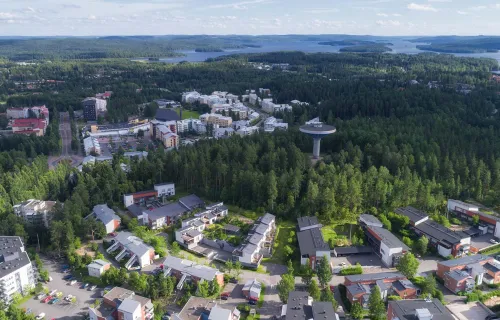Outdated systems can become a heavy weight on a company’s balance sheet, burdening it with unwanted costs and inefficient business practices. But changing a well-established system is as difficult as it is important. The benefits you reap, both financially and in improved processes, are matched by the size of the challenges involved.
In this article, we will dig into legacy modernization – what drives it, what the challenges are and what benefits modernization brings.
What is legacy modernization?
Modern businesses have a complex relationship with technology. They select and shape systems to support the way they work at a specific point in time. These systems then stay embedded in those ways of working within the business, often becoming a hindrance to change as the business evolves but not its mission critical systems.
Some systems become so critical to business operations that they can’t be replaced. Their design defines the way the business works. Unable to evolve at pace, these systems limit the business’s ability to adapt, yet remain so crucial that they’re kept in use. When this resistance to change and evolution starts to happen, the system becomes legacy. Due to the perceived cost, many businesses are forced to limit their evolution around these legacy systems, rather than evolving the systems to respond to changing market dynamics. This does not have to be the default trade-off anymore.
Legacy modernization is the process of tackling these systems, addressing the issues they create and enabling the business to transform, evolve and realize new value.
Why modernize?
There are four key drivers of legacy modernization:
- Operating costs
- Risk of obsolescence
- Poor time to market
- Regulatory requirements
Operating costs
Maintaining a legacy platform can consume a lot of resources. Hardware and software needs, integration with other systems, recruiting or training staff with specialist skills and committing their time to the keeping the system operational all draw on resources that could be used elsewhere.
Tackling these costs can free up significant resources for the business to invest in other, higher value initiatives. In one case, CGI was able to reduce platform costs by 90% by running the same code and data of a client’s legacy system in a modern platform. Another example is Meliá Hotels’ migration of their central reservation system from the mainframe into a modern architecture on AWS. This migration saved the company 60% in compute costs, and reduced time to market by 75%.
Risk of obsolescence
As a system becomes increasingly outdated, there will be fewer developers and support professionals available with the skills and experience to manage it. There’s also a growing risk that the vendor will retire support for the technology as its commercial feasibility decreases over time.
Poor time to market
These factors create further problems when combined with the frequent lack of documentation and understanding of the structure of legacy systems. This makes it harder to modify and evolve the system, which translates into high reaction times, delaying the response to new business needs and changing customer demands.
Regulatory requirements
Regulations frequently change, as governments strive to keep up with the pace of technology. They also vary between jurisdictions. This means that it is important to have technology that can adapt to legal demands, such as rules for data privacy, protection and encryption. Because of the challenges inherent in managing them, legacy technologies may not be able to comply with changing regulations.
The benefits
While modernization is driven by challenges, it delivers significant value across several factors:
- Creating business value through the effective adoption of emerging technologies. Recent examples include generative AI and emerging cybersecurity measures. Cybersecurity was reported as the highest impact industry trend in the latest CGI Voice of Our Clients survey, and 57% of the survey respondents said they are currently investigating AI or doing proofs of concept.
- Accelerating the transition toward data-driven organizations by breaking down data siloes. Data management and governance was identified as a top improvement initiative for data strategy in the same 2023 CGI Voice of Our Clients survey. Moving away from a legacy system facilitates integration, allowing more joined up, flexible working practices.
- Improving responsiveness through greater innovation and agility, while simultaneously addressing vulnerabilities and functionality gaps in legacy systems.
- Reducing costs and improving efficiency. Modern systems are cheaper and more cost effective to run, freeing up financial resources for new technology initiatives. 40% of the respondents in the 2023 CGI Voice of Our Clients survey said that legacy systems pose a high challenge to implementing digital strategy.
Challenges to legacy modernization
There are many challenges to modernization. Some of that comes down to people’s behaviour, including the systemic inertia that comes from avoiding disruption and the practices of external vendors. The issue of cost also needs to be considered.
Inertia
Many people look at the system as it stands and conclude that things are running well, so why change them? They see something stable and fear the consequences of change.
This inertia is worsened by decisions makers’ lack of understanding of the architecture of legacy applications, and how business architecture and technology architecture work in tandem. Because they do not understand it, and because there are only a limited number of options for vendors and tools, decision makers become very cautious about changes and refine technical products beyond the products shelf life.
Vendor practices
Some hardware vendors continue to evolve their legacy systems slowly, to integrate with new technologies such as the cloud. This reduces the urgency to modernize. The pain is drawn out enough to become bearable, meaning that businesses never get to reap the benefits of ripping off the bandage and moving on.
Costs
There’s no avoiding the fact that modernization costs. Complex, large scale transformation projects that impact critical business functions have a very high one-time cost and are challenging to manage. This can seem like a rational reason to delay, but the longer its takes for a business to modernize, the more costly it becomes, and the more benefits the business will miss out on in the long run.
Legacy modernization in action
One example of successful legacy modernization is the migration of credit card processing systems by Canadian banks. Most of these banks have now moved from in-house legacy systems to external credit card processing vendors. This has removed a lot of costs and risks from a critical system, making the banks’ processes more flexible.
In another case, The Vanguard Group, one of the largest investment management companies in the world, worked with AWS to modernize its legacy technology. This modernization initiative resulted in a 30% reduction in the cost of computing and a 20 times faster time to deploy workloads.
Legacy modernization can be difficult. Costs, inertia, and the practices of vendors all provide challenges to overcome. However, it’s a challenge modern businesses must face, both to overcome the issues with old systems and to reap the benefits of modern ones. When done properly, modernization yields significant business value by bringing in new technologies, enabling a pervasive data-driven culture, improving responsiveness and reducing costs.
This article was co-authored by CGI and AWS experts. These authors include:
- Anas Tawileh
- Rajneesh Sethi
- Abhilasha Yadav
- Len Brooks
- Nuno Rua
- Raza Ali Jalali





